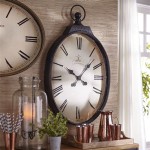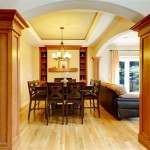```html
Bedroom Decor Ideas
The bedroom serves as a sanctuary, a space dedicated to rest, relaxation, and personal expression. Consequently, its decor warrants careful consideration. A well-designed bedroom fosters a sense of tranquility and contributes significantly to overall well-being. Decorating a bedroom involves a multifaceted approach, encompassing color palettes, furniture selection, lighting schemes, and the incorporation of personal touches. This article explores various bedroom decor ideas, offering guidance on creating a harmonious and functional space.
Color Palette Considerations
Color significantly impacts mood and perception. Therefore, selecting an appropriate color palette is crucial for bedroom decor. Neutral tones, such as beige, gray, and white, provide a versatile foundation that can be complemented with accent colors. These neutral shades create a calming atmosphere, conducive to relaxation and sleep. Warmer shades, such as soft yellows and oranges, can evoke feelings of comfort and warmth, but their intensity should be carefully managed to avoid overstimulation. Conversely, cooler tones, such as blues and greens, often associated with serenity and peace, are popular choices for bedrooms. Darker hues, such as navy or charcoal gray, can create a sense of sophistication and intimacy, but require careful balancing with lighter elements to prevent the room from feeling cramped or oppressive. The choice of paint finish also plays a role; matte finishes absorb light and minimize imperfections, while satin or eggshell finishes offer a subtle sheen and are easier to clean.
Beyond the paint, consider the color of the furniture, bedding, and accessories. Maintaining a cohesive color scheme helps to create a sense of visual harmony. One effective strategy is to select a dominant color and then incorporate complementary or analogous colors through textiles, artwork, and decorative objects. Color psychology should also be considered, researching the psychological effects of different colors to better inform the decorating choices based on individual preferences and needs. For example, lavender is often associated with relaxation and stress reduction, while light pink can evoke feelings of tranquility and gentleness.
Furniture Selection and Arrangement
Furniture forms the backbone of any bedroom design. The bed, being the focal point, deserves primary consideration. The size and style of the bed should be proportionate to the room size. A king-size bed may overwhelm a small bedroom, while a twin bed may appear inadequate in a large master suite. The bed frame material and design contribute significantly to the overall aesthetic. Wooden frames provide a classic and timeless appeal, while metal frames offer a more contemporary and minimalist look. Upholstered headboards add a touch of luxury and comfort. Beyond the bed, essential furniture pieces include bedside tables, a dresser, and possibly a seating area. Bedside tables provide convenient surfaces for lamps, books, and other necessities. Dressers offer storage for clothing, while a seating area, consisting of a comfortable chair or loveseat, creates a space for reading or relaxing.
The arrangement of furniture is equally important as the selection. The layout should be functional and aesthetically pleasing. Avoid obstructing pathways and ensure that all furniture pieces are easily accessible. A common arrangement principle is to position the bed so that it faces the door, allowing for a clear line of sight into the room. This placement can also create a sense of openness and spaciousness. Symmetry can be used to create a sense of balance and order. For example, placing identical bedside tables on either side of the bed and matching lamps on each table can create a visually appealing symmetrical arrangement. However, asymmetry can also be used effectively to create a more dynamic and interesting space. Avoid overcrowding the room with furniture; prioritize essential pieces and leave ample space for movement. The goal is to create a comfortable and functional space that promotes relaxation and ease of use.
Lighting Design for Ambiance and Functionality
Lighting is a critical element of bedroom decor, influencing both ambiance and functionality. A well-designed lighting scheme incorporates multiple layers of light, including ambient, task, and accent lighting. Ambient lighting provides overall illumination, creating a comfortable and inviting atmosphere. Task lighting, such as bedside lamps or reading lights, provides focused illumination for specific activities. Accent lighting highlights architectural features, artwork, or decorative objects, adding depth and visual interest to the room. Incorporating a dimmer switch allows for adjusting the intensity of the light to suit different moods and activities.
Consider the types of light fixtures used in the bedroom. Overhead lighting, such as recessed lights or a chandelier, provides general illumination. Bedside lamps offer convenient task lighting for reading or other activities. Wall sconces can add a touch of elegance and provide ambient or accent lighting. String lights or fairy lights can create a whimsical and romantic atmosphere. The color temperature of the light bulbs also influences the mood of the room. Warmer light bulbs (2700K-3000K) create a cozy and inviting atmosphere, while cooler light bulbs (3500K-4000K) offer a brighter and more energizing light. Pay attention to the placement of light fixtures to avoid glare or harsh shadows. Strategically positioned lighting can enhance the room's architecture and create a more visually appealing space. Natural light should also be maximized whenever possible. Keep windows clean and unobstructed to allow natural light to flood the room. Light-filtering curtains or blinds can be used to control the amount of natural light entering the room, providing privacy and reducing glare.
Textiles and Accessories: Adding Personality and Texture
Textiles and accessories provide opportunities to add personality and texture to the bedroom decor. Bedding, including sheets, comforters, duvet covers, and pillows, plays a significant role in the overall aesthetic. Choose bedding that is both comfortable and visually appealing. Natural fibers, such as cotton, linen, and silk, are breathable and comfortable, while synthetic fibers, such as polyester and microfiber, are durable and easy to care for. Consider the color, pattern, and texture of the bedding to complement the overall color scheme of the room. Layering bedding with different textures and patterns can add depth and visual interest.
Rugs can define a space and add warmth and comfort to the bedroom. Choose a rug that is appropriately sized for the room and complements the furniture arrangement. A large rug that extends under the bed and bedside tables can create a cohesive and grounded look. Smaller rugs can be used to define specific areas, such as a seating area or a dressing area. Curtains or blinds provide privacy and control the amount of natural light entering the room. Choose curtains or blinds that complement the color scheme and style of the bedroom. Artwork, photographs, and other decorative objects add personal touches and reflect individual interests and tastes. Create a gallery wall with a collection of framed prints or photographs, or display a single statement piece of artwork above the bed. Plants can add life and freshness to the bedroom. Choose plants that are easy to care for and thrive in the available light. Decorative pillows, throws, and blankets can add texture and warmth to the bedroom. Choose pillows and throws that complement the color scheme and style of the room. Incorporating mirrors can create the illusion of more space and reflect light, making the room feel brighter and more open.
Storage Solutions for a Clutter-Free Environment
Effective storage solutions are essential for maintaining a clutter-free and organized bedroom. Clutter can contribute to stress and anxiety, making it difficult to relax and unwind. Maximize storage space by utilizing vertical space. Tall bookshelves or cabinets can provide ample storage for books, clothing, and other items. Under-bed storage containers are a convenient way to store seasonal clothing, extra bedding, or other items that are not used frequently. Bedside tables with drawers or shelves provide storage for books, magazines, and other bedside essentials. A well-organized closet is crucial for keeping clothing and accessories neat and accessible. Utilize closet organizers, such as shelves, drawers, and hanging rods, to maximize space and keep items neatly arranged. Consider using baskets, bins, and boxes to organize smaller items, such as jewelry, accessories, and toiletries. A designated hamper for laundry helps to keep dirty clothes out of sight. Regularly declutter the bedroom to remove unnecessary items and maintain a sense of order. Consider donating or selling items that are no longer used or needed.
```
Best Bedroom Decor Ideas Forbes Home

30 Stylish Bedroom Wall Decor Ideas And Tips

10 Aesthetic Room Decor Ideas To Spruce Your Space Puffy Blog

40 Best White Bedroom Ideas 2025 Luxury Designs

7 Simple Summer Bedroom Decorating Ideas Setting For Four Interiors

The Best Home Decor For A Stylish In 2025 Bedroom Design Trends Modern

10 Ways To Add Vintage Charm Your Bedroom Decor

Master Bedroom Decor Ideas To Revamp Your Modern Home

101 Bedroom Decorating Ideas 2025 Interior Design

41 Best Modern Bedroom Ideas 2025 Contemporary Decor
Related Posts







